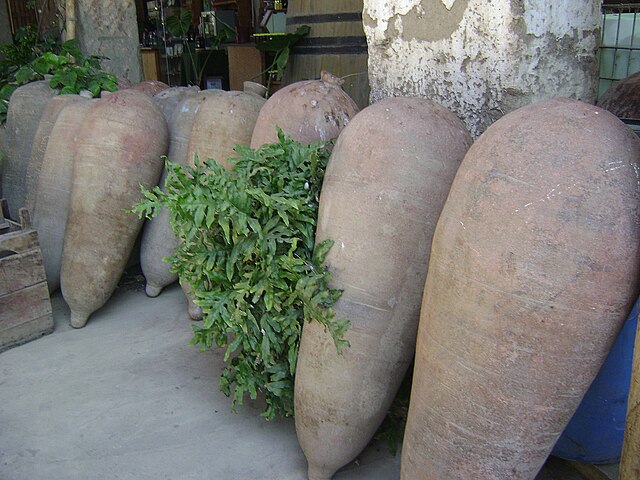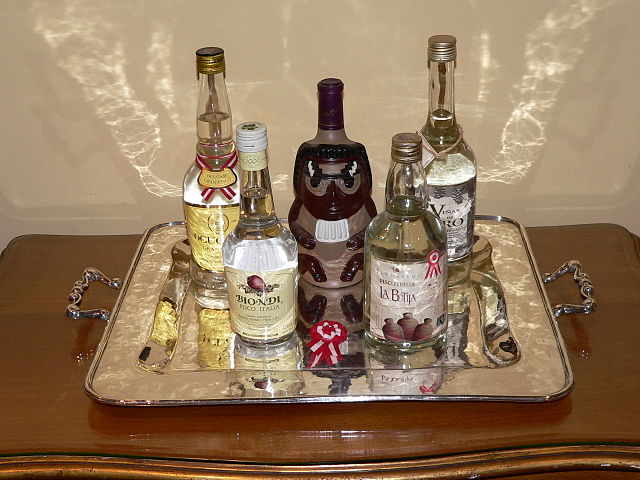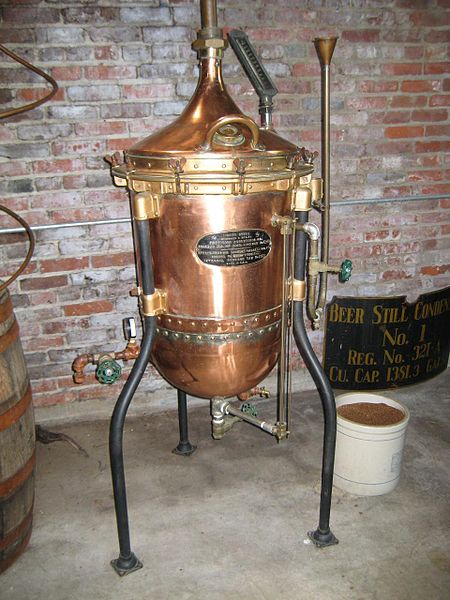Pisco is a colorless or yellowish-to-amber colored spirit produced in winemaking regions of Peru and Chile. Made by distilling fermented grape juice into a high-proof spirit, it was developed by 16th-century Spanish settlers as an alternative to orujo, a pomace brandy that was being imported from Spain. It had the advantages of being produced from abundant domestically grown fruit and reducing the volume of alcoholic beverages transported to remote locations.
Colonial era amphorae called pisko in Cañete Valley, Peru
Zones of pisco production as established by Peruvian and Chilean law in red; the Department of Tarija, Bolivia, where most singani is produced in green
"The town of Ica, land of much wine, the best of the kingdom", painting of 1615 by the Inca painter Guamán Poma in his work "Nueva corónica y buen gobierno". Royal Library, Denmark.
Bottles of Peruvian pisco
Liquor is an alcoholic drink produced by the distillation of grains, fruits, vegetables, or sugar that have already gone through alcoholic fermentation. Other terms for liquor include: spirit, distilled beverage, booze, spirituous liquor or hard liquor. The distillation process concentrates the liquid to increase its alcohol by volume. As liquors contain significantly more alcohol (ethanol) than other alcoholic drinks, they are considered "harder." In North America, the term hard liquor is sometimes used to distinguish distilled alcoholic drinks from non-distilled ones, whereas the term spirits is more commonly used in the UK. Some examples of liquors include vodka, rum, gin, and tequila. Liquors are often aged in barrels, such as for the production of brandy and whiskey, or are infused with flavorings to form flavored liquors, such as absinthe.
An old whiskey still
A display of various liquors in a supermarket
Some single-drink liquor bottles available in Germany
Viru Valge, an Estonian vodka








